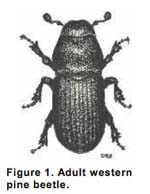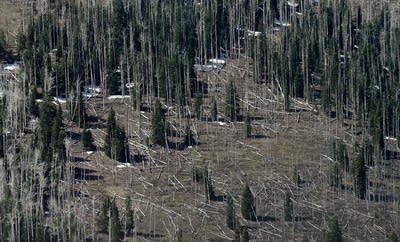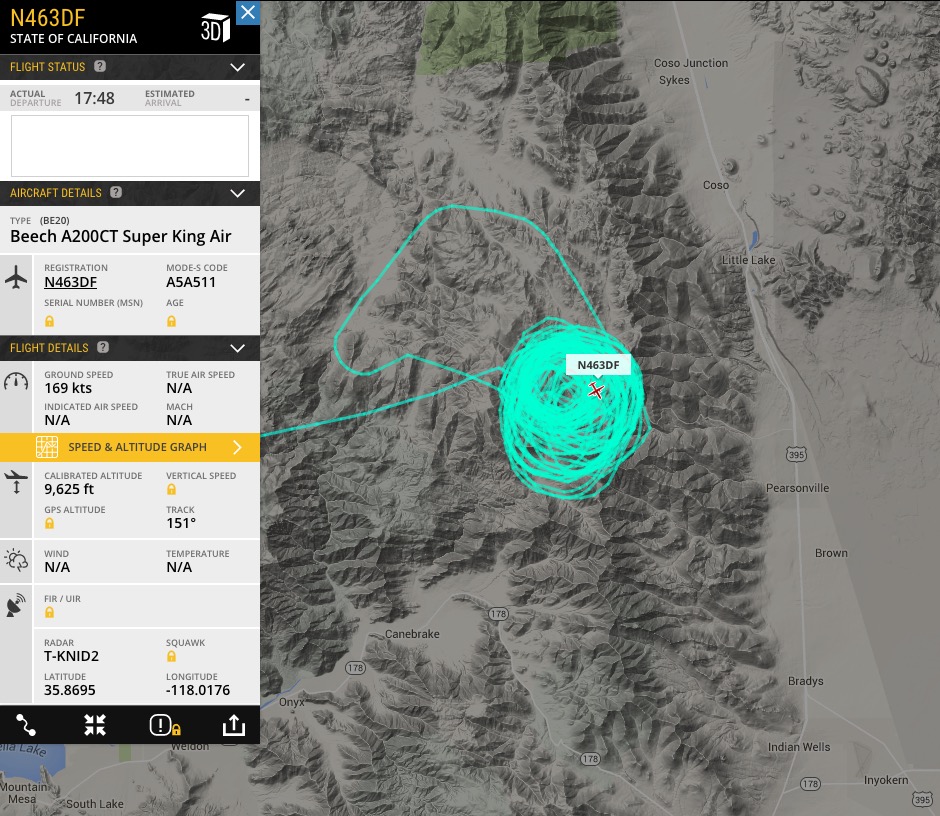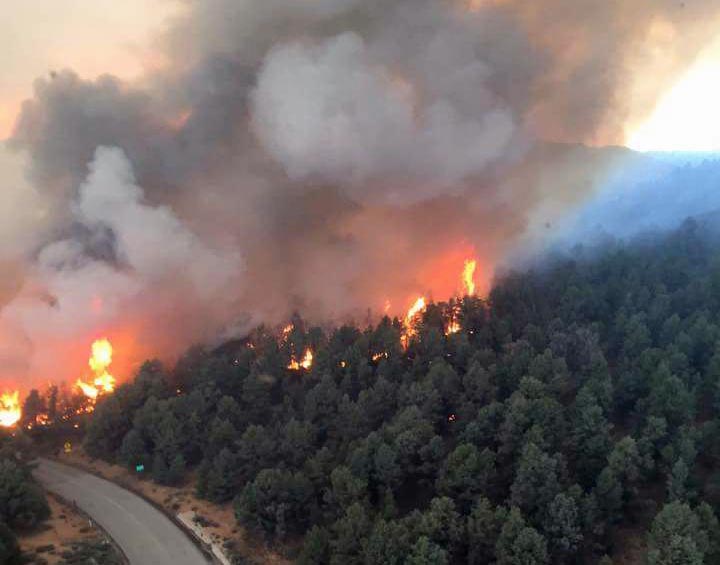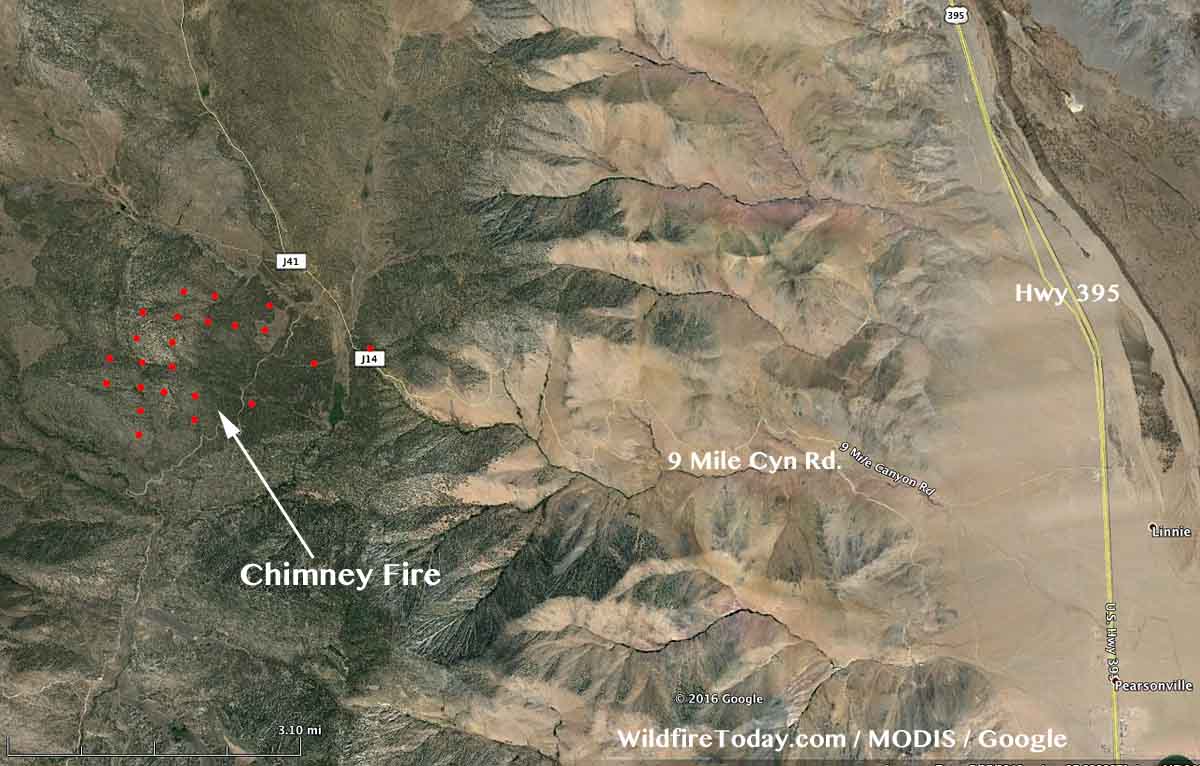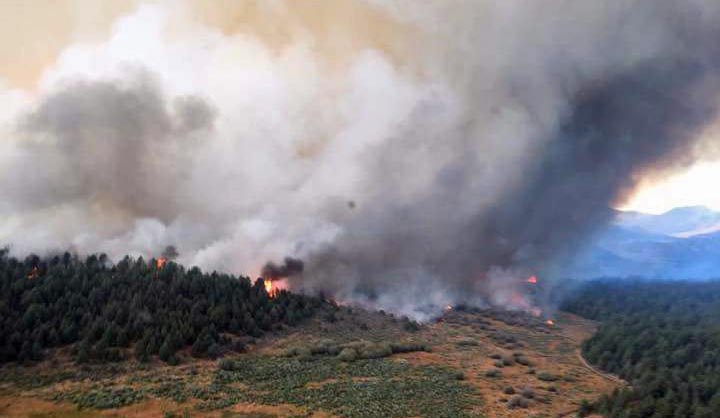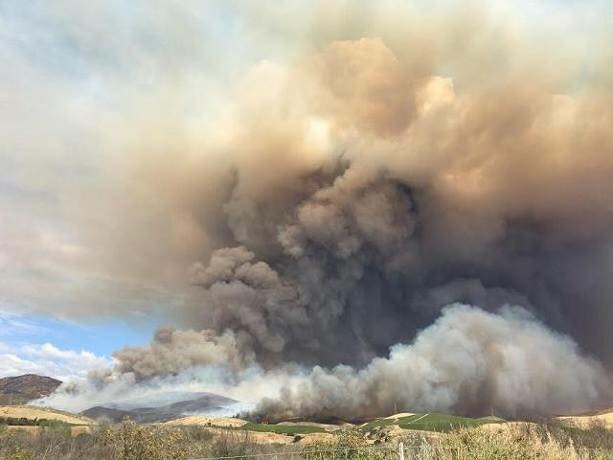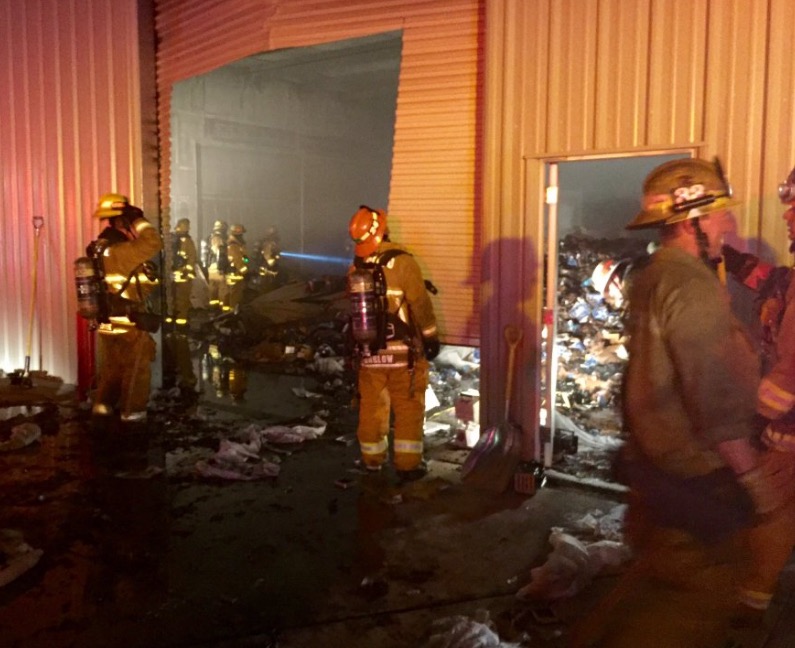(UPDATED at 5:15 p.m. PDT June 8, 2016)
The incident management team running the Coleman Fire southwest of King City, California has not revised the reported size in the last two days. They say it’s holding at 2,340 while being attended by about 1,000 personnel, however some of those are being released.
The team’s report Tuesday morning:
Fire crews made good progress again yesterday. Most of the fireline on the south and east side of the fire is contained. Crews were able to access and line several of the “fire fingers” on the west side of the fire in the Ventana Wilderness. The contingency dozer line on the west side of the fire was completed. Crews mopped-up and patrolled the fireline throughout the night on the east side of the fire.
The priority for [Tuesday] and the next several days will be constructing direct fireline on the west side of the fire in the Ventana Wilderness. There is a significant amount of open line that needs to be completed. This area is very steep and remote and line production is slow and difficult. Mop-up and patrol will continue on the other portions of the fire. Air support from both air tankers and helicopters is available to assist ground crews.
****
(UPDATED at 8:58 p.m. PDT, June 6, 2016)

The Coleman fire is not spreading. It fact it is shrinking. Sunday morning the incident management team said it had burned 3,500 acres. Then Monday morning it was 3,200 acres. The latest report from the team has it at 2,340 acres.
Within a few hours of it starting on Saturday the Southern California Geographic Area Coordination Center (OSCC) reported that the fire had “the potential to burn 10,000 to 35,000 acres”. So either the weather cooperated and slowed the spread, or the firefighters did a masterful job of knocking it down. Probably some of both is the answer. There are many residences northeast of the fire between the current perimeter and King City, only 8 miles away. The National Interagency Coordination Center’s Incident Management Situation Report Monday morning reported that one structure has burned in the fire. Considering the very rapid spread during the first few hours, that should be considered a good outcome.
****
(UPDATED at 9:21 a.m. PDT, June 6, 2016)

The Coleman Fire 8 miles southwest of King City, California has not grown much over the last 24 hours. Some of the smoke seen by residents on Sunday was caused by backfires or burnouts conducted by firefighters to secure control lines.
The incident management team is calling it 3,200 acres, down from the 3,500 figure they released on Sunday.
Resources assigned include 658 personnel, 11 hand crews, 80 engines, and 4 helicopters. One structure has burned. The estimated suppression cost as of Sunday was $1.2 million.
The weather forecast for the fire area on Monday predicts 97 degrees, relative humidity of 13 percent, and north to northeast winds at 6 to 10 mph. The conditions on Tuesday will be similar.

****
(UPDATED at 12:45 p.m. PDT, June 5, 2016)
At noon today the Southern California Geographic Area Coordination Center (OSCC) stated that the Coleman Fire southwest of King City, California will exhibit “extreme fire behavior as the day goes on” and that multiple residences are out in front of the fire. They are calling it 3,500 acres.
****
(UPDATED at 11 a.m. PDT June 5, 2016)
McGowan’s Type 1 incident management team has been mobilized to the Coleman Fire which has spread to within eight miles of King City, California overnight. The team and will inbrief at 10 a.m.
The Monterey County Sheriff’s Office reported at 10:20 a.m. that deputies assisted with mandatory evacuations and remain in the area in case other evacuations are needed. Deputies started evacuations on Reliz Canyon and worked their way down to Elm Ave. They did the same on Monroe Cyn.
The map of the fire below shows that it spread significantly to the north and northeast in the 12 hours before 3:23 a.m. PDT, June 5. Using the heat data collected by a satellite at that time, we estimate the size to be 1,200 to 1,700 acres. However, some areas within the fire have light fuel such as grass which could burn and then cool before the next satellite overpass and would not be detected, thereby giving us an underestimated acreage count.
The green line is the border of the Los Padres National Forest. The Forest is on the left side of the line. Click on the maps to see larger versions.
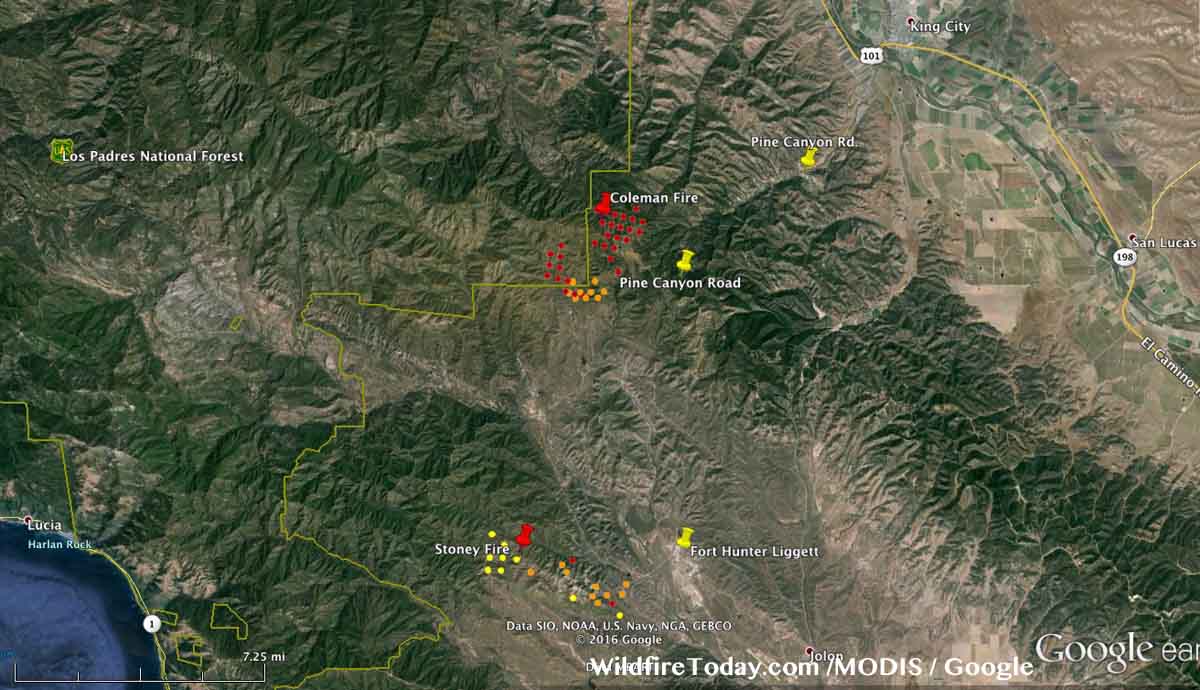
The map of the Coleman Fire below is in 3-D, looking northeast toward King City.

Continue reading “California: Coleman fire, southwest of King City”

